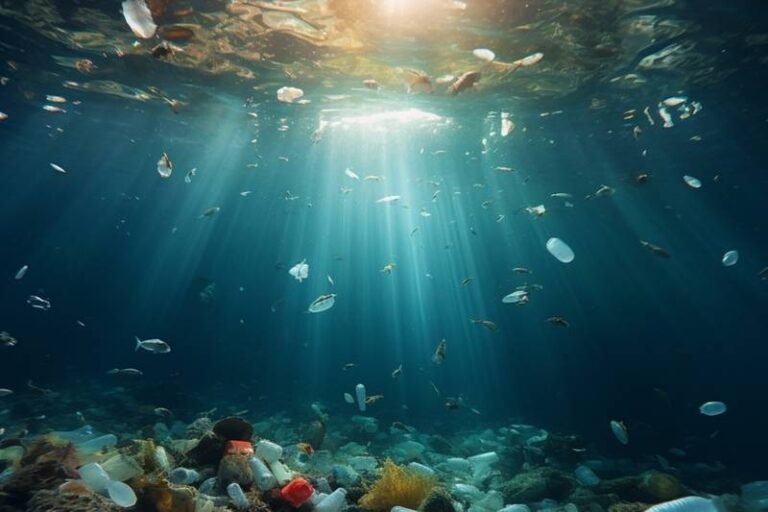The Hidden Depths of Ocean Microplastics
It is estimated that between 9 to 14 million metric tons of plastic find their way into the world’s oceans every year. Among these pollutants, microplastics – ranging from 1 micron to 5 millimeters in size – constitute a significant portion. While previous research has mainly focused on surface waters, a recent study led by an international team of scientists, including researchers from Florida Atlantic University (FAU), has shed light on the distribution of microplastics from the ocean’s surface to its hidden depths on a global scale.
The team synthesized data from 1,885 sampling stations collected between 2014 and 2024 to create a comprehensive map of microplastic distribution patterns by size and polymer type. Their findings, published in the journal Nature, reveal that microplastics are not confined to surface waters but are deeply embedded throughout the ocean’s structure. These tiny plastic particles, ranging from a few to thousands per cubic meter, exhibit different movement patterns based on their size.
Smaller microplastics (1 to 100 micrometers) disperse more evenly and penetrate deeper into the ocean, while larger ones (100 to 5,000 micrometers) tend to concentrate near the surface, particularly within the top 100 meters of gyres – large whirlpool-like ocean currents that trap and accumulate floating debris, including plastic waste.
Interestingly, microplastics are not just environmental pollutants; they are also becoming integral components of the ocean’s carbon cycle. While they make up only 0.1% of carbon particles at 30 meters depth, this percentage increases to 5% at 2,000 meters. This suggests that microplastics could be influencing crucial biogeochemical processes in the deep sea.
Tracy Mincer, Ph.D., an associate professor of biology and biochemistry at FAU and a co-author of the study, emphasized the pervasive nature of microplastics in the ocean, stating, “Microplastics are not just floating at the surface – they’re deeply embedded throughout the ocean, from coastal waters to the open sea.”
The researchers identified more than 56 types of plastic polymers in their study. While buoyant plastics are prevalent overall, denser microplastics are more commonly found offshore, likely due to their propensity to fragment more easily. These dense polymers, originating from sources such as fishing gear and containers, can persist in the ocean for decades, impacting marine ecosystems.
Notably, different types of plastic polymers exhibit varying degradation rates. For example, polypropylene, found in items like yogurt containers and rope, degrades more rapidly than polyethylene, commonly used in plastic bags and water bottles. This could explain the lower abundance of polypropylene in offshore waters.
The study, a collaborative effort involving multiple research institutions worldwide, provides valuable insights into the distribution and impact of microplastics in the ocean. By understanding the depth of the issue, researchers and policymakers can work towards implementing effective strategies to mitigate the harmful effects of plastic pollution on marine environments.

